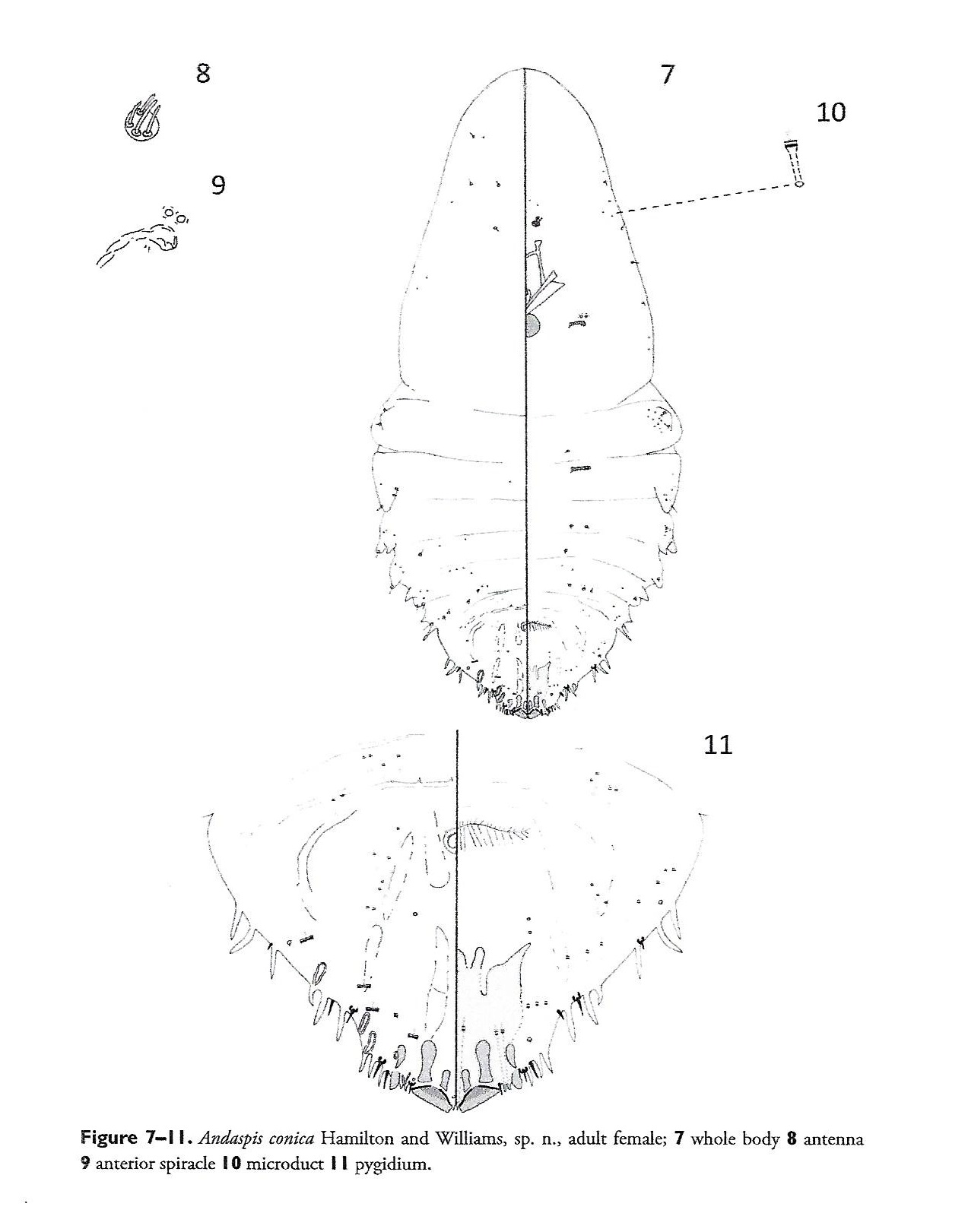Valid Names Results
Andaspis conica Hamilton & Williams, 2017 (Diaspididae: Andaspis)Nomenclatural History
- Andaspis conica Hamilton & Williams 2017: 21-23. Type data: NEW CALEDONIA: Rivière Bleue, on Nothofagus codonandra , 10/10/1978, by J.S.Dugdale. Holotype, female, by original designation Type depository: London: The Natural History Museum, England, UK; accepted valid name Notes: Paratypes: 13 adult females. Same data as holotype. Deposited at BMNH and NMNH. Illustr.
Common Names
Ecological Associates
Hosts:
Families: 1 | Genera: 1
- Nothofagaceae
- Nothofagus codonandra | HamiltWiHa2017
Geographic Distribution
Countries: 1
- New Caledonia | HamiltWiHa2017
Keys
- HamiltWiHa2017: pp.30 ( Adult (F) ) [Andaspis from New Caledonia]
Remarks
- Systematics: http://zoobank.org/F31D9577-607E-4E92-9F0E-E24418422622 The adult female of this species most resembles that of Andaspis kazimiae Williams, 1963, a species known to occur in Pakistan. Adult females of the two species share four marginal macroducts located on the dorsum and have a second lobe. This species differs from A. kazimiae by the following characters (those for A. kazimiae in parentheses): a pair of scleroses located above each median lobe (scleroses absent above each median lobe), second lobe with pyriform sclerosis near base (second lobe without pyriform sclerosis near base), lacking perivulvar pores (three groups of perivulvar pores), and antennae with four setae (antennae with two setae). (Hamilton, et al., 2017)
- Structure: Slide-mounted adult female 0.88–1.52 mm long; 0.42–0.54 mm wide. Body outline fusiform, derm membranous except for pygidium. Each antenna with four setae. Anterior spiracles each with 1 or 2 disc pores, each about 3 μm in diameter, trilocular; posterior spiracles lacking pores. Anterior abdominal segments well-developed with convex margins; tooth-like tubercles present on margins of segments 1, 3, and 4. In addition to those on pygidium, a pair of gland spines present along lateral margins of abdominal segment 4. (Hamilton, et al., 2017)
- General Remarks: Detailed description and illustration in Hamilton, et al., 2017)
Illustrations
Citations
- HamiltWiHa2017: description, diagnosis, host, illustration, taxonomy, 21-23
- NormarOkMo2019: taxonomy, 58



